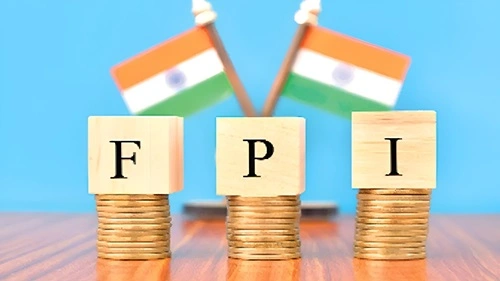In the first ten days of January 2025, Foreign Portfolio Investors (FPIs) have withdrawn a substantial ₹22,194 crore from Indian equity markets. This significant outflow follows a net investment of ₹15,446 crore in December 2024, indicating a swift reversal in investment trends.
Factors Influencing the Withdrawal

Several key factors have contributed to this capital flight:
- Weak Earnings Outlook: Anticipation of a lackluster earnings season has dampened investor sentiment, prompting FPIs to reassess their positions in Indian equities.
- Strengthening US Dollar: The US dollar has been on a steady rise, making investments in emerging markets like India less attractive due to potential currency depreciation risks.
- Concerns Over Tariff Policies: With the inauguration of President Donald Trump, there is growing apprehension about potential tariff wars and their implications on global trade, influencing FPIs to adopt a cautious approach.
- Domestic Economic Indicators: Sluggish GDP growth and persistent inflation have further contributed to the bearish outlook, leading to reduced foreign investments.
Market Valuations and Investment Attractiveness
High valuations in the Indian stock markets have also played a role in the FPI exodus. Elevated stock prices, coupled with the strengthening US dollar and rising US bond yields, have made Indian equities less appealing to foreign investors seeking better risk-adjusted returns elsewhere.
Comparative Analysis with Previous Months
The current withdrawal is notable, especially when contrasted with the investment patterns observed in the latter half of 2024. In September 2024, FPIs had infused a nine-month high of ₹57,724 crore into Indian equities, driven by optimism over India’s economic resilience. However, this was followed by significant outflows of ₹94,017 crore in October and ₹22,420 crore in November, indicating increasing volatility and shifting investor sentiments.
Implications for the Indian Market
The persistent withdrawal of FPIs poses several challenges for the Indian financial markets:
- Market Volatility: Large-scale FPI exits can lead to increased volatility, affecting market stability and investor confidence.
- Currency Depreciation: Outflows exert pressure on the Indian rupee, potentially leading to depreciation against the US dollar, which can have broader economic implications.
- Liquidity Concerns: Sustained withdrawals may impact market liquidity, affecting the ease of transactions and potentially leading to wider bid-ask spreads.
Expert Insights
V K Vijayakumar, Chief Investment Strategist at Geojit Financial Services, attributes the relentless selling by FPIs primarily to the steady rise in the dollar index, which has surpassed 109. He notes that the surge in the 10-year US bond yield to above 4.6% is directing capital flows away from emerging markets like India.
Himanshu Srivastava, Associate Director at Morningstar Investment Research India, highlights that the exodus of foreign capital can be attributed to multiple factors, including expectations of a weak earnings season, concerns over tariff wars under the Trump administration, and domestic economic challenges such as sluggish GDP growth and high inflation.
Outlook for the Future
While the current trend indicates caution among foreign investors, the long-term outlook will depend on several factors:
- Corporate Earnings Performance: Stronger-than-expected earnings could restore confidence and attract FPI inflows.
- Policy Stability: Clarity on trade policies and economic reforms may alleviate concerns and enhance India’s attractiveness as an investment destination.
- Global Economic Conditions: Shifts in global economic indicators, including currency valuations and interest rates, will continue to influence FPI behavior.
Conclusion
The withdrawal of ₹22,194 crore by FPIs in early January underscores the sensitivity of foreign investments to both global and domestic economic factors. Addressing the underlying concerns through robust economic policies and fostering a stable investment environment will be crucial in reversing this trend and attracting sustained foreign capital into Indian markets.